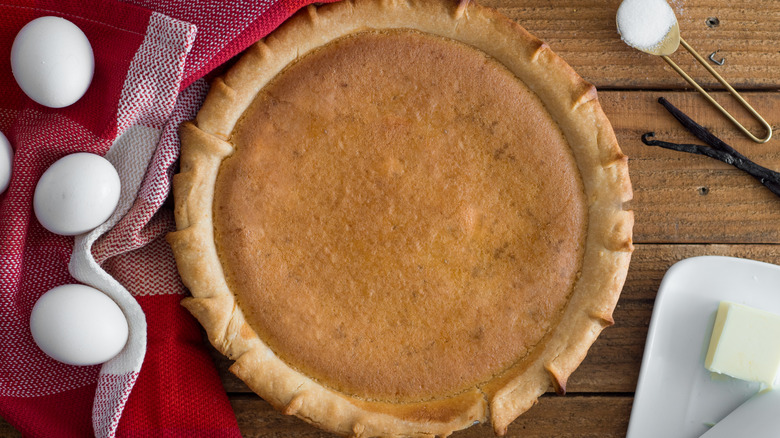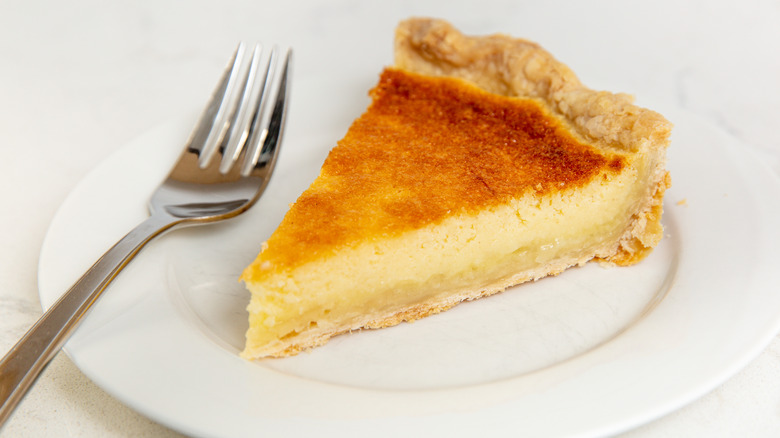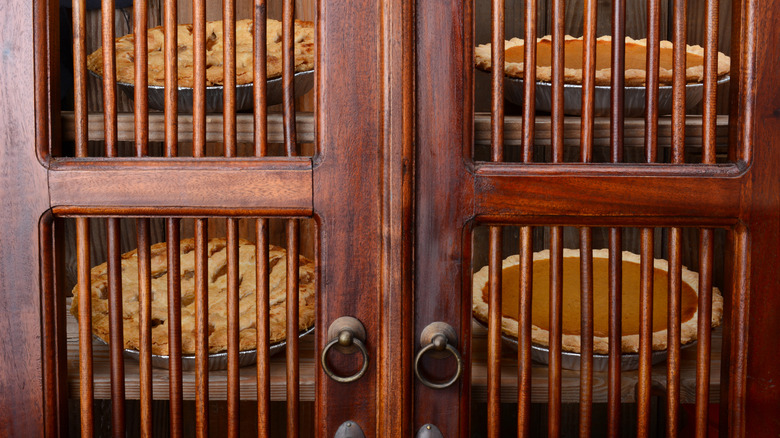The Ambiguous Origins Of Chess Pie's Name
Chess pie isn't the most popular pie out there, but it's a great recipe to know because of its simple ingredients, which most people have on hand — eggs, milk, butter, and sugar. It's a simple, sweet, custard pie with no outstanding flavor or characteristic, but where did it get its name? The only thing unambiguous about chess pie is that it was derived in the South. However, it can be found in Appalachia and the Midwest, too, according to Food52. The only thing definitive about chess pie is that no one really knows where the name came from, but there is plenty of folklore.
One story goes like this — as an answer to curious diners, a waitress could be heard saying "just pie," but with a Southern accent that could also be heard as "jess pie" or "chess pie," per Portable Press. Another spin on this story is that when a plantation owner (not a waitress) was asked what she was cooking, she simply answered, "jess pie," per What's Cooking America. The earliest recipe for chess pie is in fact British. It comes from the book, "Martha Washington's Booke of Cookery." Since Martha was living in Virginia at the time, though, it's become synonymous with the South. This book brings us to story number two.
Chess pie could have come from cheese pie
Transcribed by food historian Karen Hess, Martha's instructions begin with boiling cream and then adding eggs. The recipe continues with the addition of sugar, currants, and butter, and then thickening the mixture with flour, per What's Cooking America. The title of the pie, however, is listed under "cheesecakes without cheese curd."
If "chess" is a version (or mispronunciation) of "cheese," Chess Pie is a colonist's adaptation of cheesecake, explains Portable Press. Food52 tells us that colonists made cheese pies with cheese curds, sugar, eggs, and a variety of flavorings (like rosewater in Martha's recipe). In an 1877 recipe in a book called "Buckeye Cookery," the cheese is replaced with butter (via What's Cooking America). The cheese texture and look are achieved through the making of a rich custard with butter and sugar, per NPR. After all these ingredients are cooked, they are less likely to spoil and can be kept fresh in what the Colonists called a "pie safe." This is a small metal piece of furniture, similar to a cabinet with small holes in the door for aeration (via Food52). Enter story number three.
Chess or chest pie?
It is thought that the name for chess pie also comes from the type of pie that is kept in a chest. Chests and pantries were places that Colonists stored foods that didn't spoil quickly, as this kept them safe from mice and rats. However, another side to this chest story is that it could be referred to as the type of pie that's made with pantry staples like butter, eggs, and sugar.
Still, like the pie itself, there is another variation of the story. Phila Hach, southern chef and restaurant owner, claims with unparalleled confidence that the name chess pie came from the chestnut meal that was used in place of cornmeal for thickening, per The Washington Post. Indeed, many recipes require some sort of thickening, and cornmeal seems to be what's called for, according to My Recipes.
Regardless of the complicated etymology, chess pie is simple. It gives anyone with a sweet craving the ability to cook up something with basic ingredients they likely have on hand.


